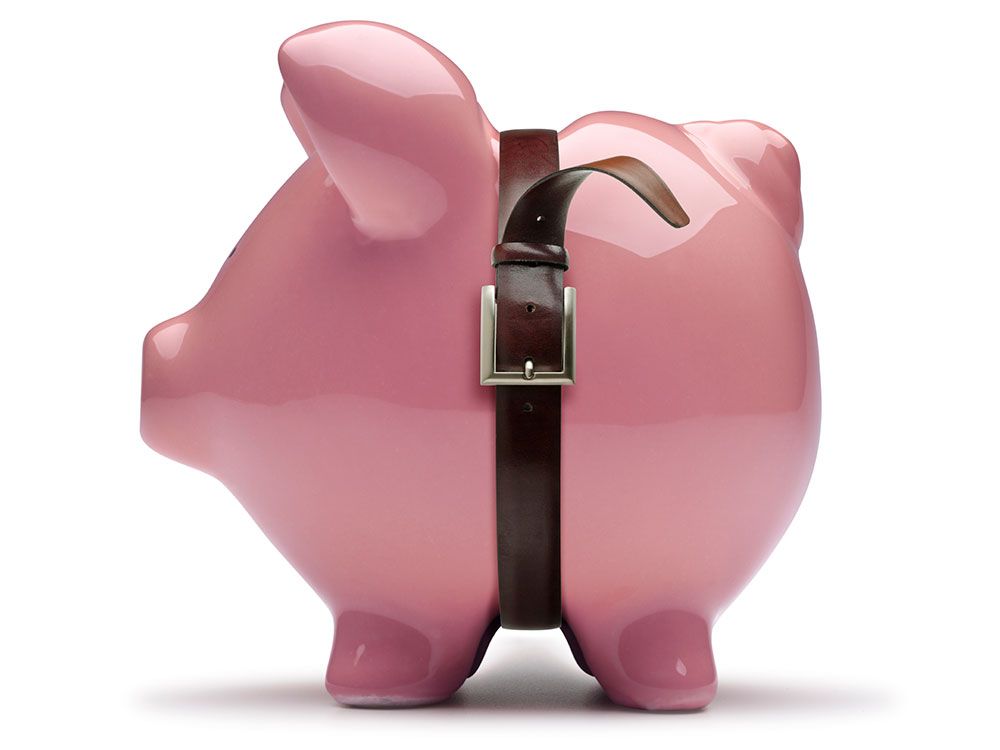Canada dodges technical recession but ‘struggles to grow’

GDP shrinks in third quarter as exports, household spending and business investment decline

Article content
The Canadian economy declined in the third quarter due to a decrease in exports, flat household spending and decreased business investment in certain sectors, Statistics Canada said, making it unlikely that the Bank of Canada will hike interest rates next week.
Real gross domestic product (GDP) shrank by 0.3 per cent in the third quarter and 1.1 per cent on an annualized basis. It would have been the second consecutive quarterly decline in GDP, which would have indicated that Canada is in a technical recession, but the agency revised its second-quarter reading to a 0.3 per cent gain up from a slight decline.
Advertisement 2
Story continues below
Article content
Article content
Economists, though, say the big picture is that the country’s economy is struggling to grow.
Canada avoided the dreaded “two quarters in a row of declining GDP,” Douglas Porter, chief economist at the Bank of Montreal, said in a note, adding that “whatever label you slap on this economy, it’s basically not growing despite the artificial sweetener of rapid population growth.”
Canada’s population grew by a record one million people last year.
Toronto-Dominion Bank’s senior economist James Orlando said while Canada is not in a technical recession, “it’s not good either.”
The economy contracted more than expected in the third quarter, but the upward revision in the second quarter and the positive flash estimate for October — a 0.2 per cent gain — should “ease some recession concerns,” he said.
Nathan Janzen, a senior economist at Royal Bank of Canada, said the “macro backdrop continues to look soft, particularly controlling for high levels of population growth that are boosting” both the economy’s production and consumption.
Exports of goods and services fell 1.3 per cent in the third quarter after increasing by 1.3 per cent in the second quarter. Imports also fell by 0.2 per cent after a 1.1 per cent increase in the second quarter. Household spending on services increased by 0.3 per cent, but that was offset by declines in spending on non-durable and semi-durable goods by 0.4 and 2.8 per cent, respectively.
Article content
Advertisement 3
Story continues below
Article content
Spending on engineering structures fell by 2.5 per cent, the first decline since the first quarter of 2022, while business spending on machinery and equipment fell 3.8 per cent, following a 4.4 per cent increase in the second quarter. The decrease was led by lower spending on aircraft and other transportation equipment.
Wages and salaries in the service industry rose by 1.7 per cent, while those in the goods producing industries were flat. Overall, compensation of employees increased 1.3 per cent in the third quarter as average earnings and employment rose.
New housing construction increased for the first time since early 2022 and after five consecutive quarterly declines, housing investment rose 2 per cent. Apartment construction had the “greatest impact” on new construction, Statistics Canada said.
Related Stories
Economists say the GDP numbers suggest the Bank of Canada isn’t going to hike interest rates on Dec. 6, but they don’t provide a clear picture on when rate cuts might begin.
Advertisement 4
Story continues below
Article content
There is “no reason for the Bank of Canada to hike again,” said TD’s Orlando who expects rate cuts will starting in April.
“When the Bank of Canada decided to hike in June and July, it was because Q1 2023 growth was surging alongside a recoil in housing demand,” he said. “But that was short-lived … with overall inflation easing ever since. We expect below trend economic growth to continue.”
RBC’s Janzen said the labour market appears to be softening, referring to the six per cent drop in job vacancies revealed in a separate Statistics Canada report this week.
In response to the GDP numbers, Prime Minister Justin Trudeau said the federal government will keep investing in housing to make it more affordable and bring rents down as well as lower grocery prices in a fiscally responsible way.
“We know that Canadians are facing challenging times and have for a long stretch now,” he said at a press conference on Nov. 30. “That’s why we have been stepping up with direct support for Canadians.”
• Email: nkarim@postmedia.com
Bookmark our website and support our journalism: Don’t miss the business news you need to know — add financialpost.com to your bookmarks and sign up for our newsletters here.
Article content








Comments